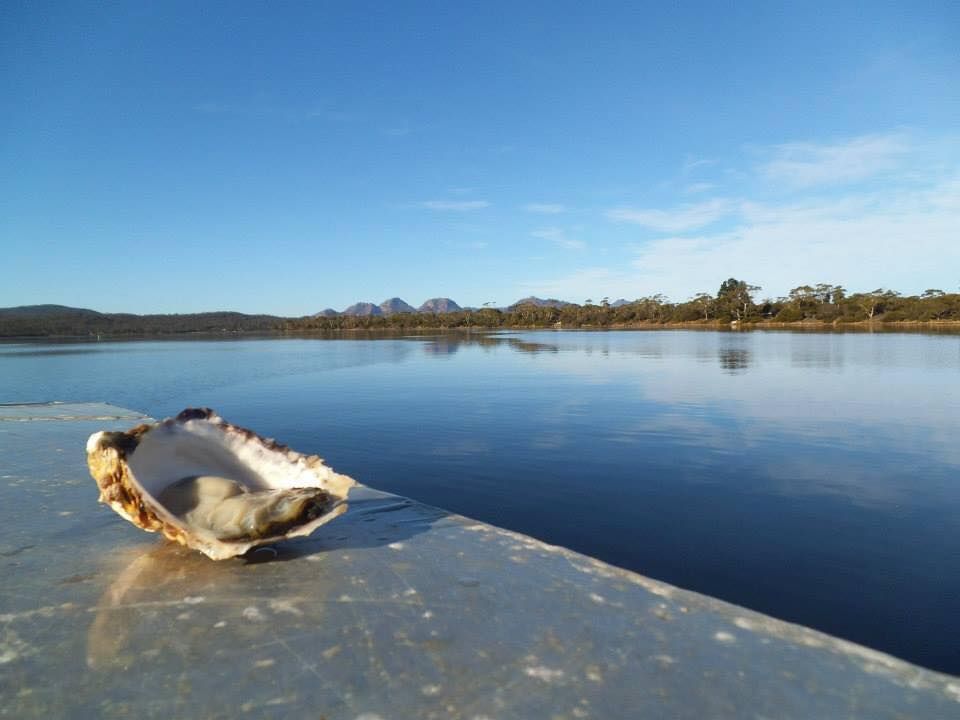Freycinet Oysters
Tasmania’s east coast is famous for its fresh, succulent seafood. The oyster—one of the best known and most sought after delicacies of the region—has a history that dates back thousands of years.
The Angasi oyster – a native delicacy
The Angasi oyster (Ostrea angasi) or southern mud oyster, is native to Tasmania and southern Australia. The Angasi was an important traditional food source for local Aboriginal people, and middens throughout Freycinet National Park and along the east coast contain countless numbers of Angasi shells. While considered a delicacy, Angasi oysters are difficult to cultivate commercially, and so the vast majority of fresh oysters farmed in Australia are the more resilient Pacific oysters.
Oyster farming at Freycinet
Oyster farming is Australia’s oldest aquaculture industry, dating back to the 1800s. Oysters have been farmed at Freycinet since 1975, when Alan Yates began growing Pacific oysters in the Swan River, using the traditional racking system. Racking involves placing open mesh baskets in estuaries, where the oysters are submerged at high tide and exposed at low tide—a process that helps to strengthen the oyster shell. However, this method of farming carries a number of risks, including fresh water flooding, which can destroy oyster crops.
During the mid-1980s, the Tasmanian government opened up the deeper waters of Great Oyster Bay to oyster farmers, who began growing their shellfish using the sub-tidal method. Sub-tidal farming involves anchoring ropes across a stretch of water and attaching cages of oysters to the lines. Oysters grown by this method are constantly submerged, which improves their flavour and eliminates the risk of freshwater flooding.
The taste of Freycinet
Freycinet’s oyster farms produce some of Australia’s highest quality seafood, and a visit to the region just isn’t complete without savouring the taste of a freshly shucked east coast oyster. The menus at the Bay Restaurant and Richardson’s Bistro feature this premium product, alongside delicious locally grown mussels, scallops, abalone, and other seasonal delicacies such as lobster and octopus.
You can also sample fresh oysters and mussels direct from local producers at Freycinet Marine Farm, and Melshell Oysters.
Oyster facts
-
The Pacific oyster is native to the pacific coast of Asia.
-
Pacific oysters are one of the world’s most widely cultivated shellfish species.
-
Most oysters change gender during their life cycle – spawning first as a male and then as a female.
-
Female Pacific oysters produce up to 40 million eggs each time they spawn.
-
Pacific oysters are plankton feeders that filter tiny microorganisms from the surrounding seawater.
-
Oyster larvae are free swimming for up to a month before they find a suitable hard surface to attach to and develop.
On average, an oyster takes three years to grow to a commercial size for eating. Pacific oysters can live up to 10 years.



